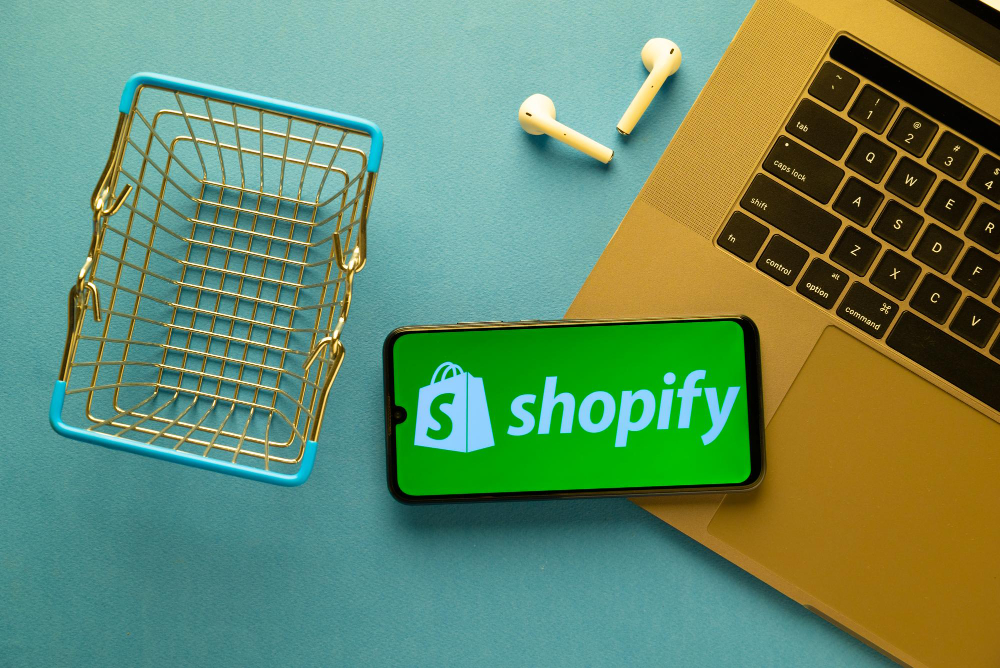- Why Choose Shopify for Ecommerce?
- How to Sell on Shopify: A Step-by-Step Guide
- The AMSOS™ Advantage: Growing Your Shopify Store
- Get your AMSOS score
The Importance of Magento (Adobe Commerce) SEO
User-Friendly Interface
At AMSOS™, we understand the importance of a platform that simplifies your workflow and empowers you to focus on what matters most – growing your brand. Shopify’s intuitive interface makes it easy to set up and manage an online store, regardless of technical experience. This user-friendly design eliminates the need for extensive coding knowledge, saving you valuable time and resources. With a drag-and-drop editor and a well-structured interface, you can customise your store’s layout, add product listings, and manage all aspects of your ecommerce business from a single, centralised hub. This user-friendliness is a major benefit, especially for busy product brand founders like yourself who may not have a background in web development.
Customisable Themes
Shopify offers a vast selection of customisable themes, allowing you to create a unique and engaging online shopping experience that reflects your brand’s vision and resonates with your target audience. From sleek, minimalist designs to vibrant and playful themes, a Shopify theme suits every brand aesthetic. These themes are visually appealing and fully responsive, ensuring your store looks great and functions flawlessly across all devices, from desktops to tablets and smartphones. This responsiveness is crucial in today’s mobile-first shopping landscape, where many online purchases are made on smartphones. Additionally, Shopify’s themes are built with search engine optimisation (SEO) in mind, providing a strong foundation for organic traffic growth.
Powerful Sales Tools
Shopify’s robust suite of sales tools equips you with everything you need to streamline operations, boost sales, and achieve long-term ecommerce success. From managing inventory levels and fulfilling orders efficiently to implementing targeted marketing campaigns and engaging with customers, Shopify empowers you to take control of every aspect of your online store. Features like abandoned cart recovery tools help you recapture lost sales, while discount codes and promotional offers enable you to attract new customers and incentivise repeat purchases. Powerful analytics dashboards provide valuable customer insights, allowing you to identify trends, understand customer behaviour, and make data-driven decisions that optimise your ecommerce strategy for maximum growth. By leveraging these sales tools effectively, you can transform your Shopify store into a high-converting sales machine.
How to Sell on Shopify: A Step-by-Step Guide
Step 1: Setting Up Your Store
Sign Up for Shopify
Visit the Shopify website and sign up for a free trial. Enter your store name, email address, and password to get started. This free trial allows you to explore the platform’s functionalities and test-drive its features before committing to a paid plan.
Choose a Theme
Browse through Shopify’s extensive theme store, featuring a variety of options to suit any brand aesthetic. Shopify themes are mobile-responsive, ensuring your online store looks perfect across all devices. Don’t worry if you’re not a design expert – many themes are easily customisable with your brand colours, fonts, and logos, allowing you to create a unique and professional storefront that reflects your brand identity.
Add Products
Use Shopify’s user-friendly product management system to add your products effortlessly. Include high-quality images that showcase your products from multiple angles, enticing potential customers. Write compelling product descriptions alongside high-quality visuals highlighting features, benefits, and specifications. Don’t forget to set competitive prices to attract your target audience.
Set Up Payments
Choose from secure payment gateways seamlessly integrated with Shopify, including popular options like PayPal, Stripe, or Shopify Payments. Setting up payments ensures a smooth checkout process for your customers, fostering trust and encouraging repeat business.
Configure Shipping Settings
Define your shipping options, rates, and methods to give customers a transparent and convenient delivery experience. Shopify offers flexible shipping options to accommodate your business needs, whether you fulfil orders or leverage dropshipping suppliers. Communicate your shipping policy and estimated delivery times to set expectations and build customer confidence.
Step 2: Optimising Your Shopify Store for SEO
SEO is crucial for driving organic traffic to your Shopify store and attracting potential customers searching for products like yours. Here are some key strategies to enhance your SEO and establish a strong foundation for long-term growth:
Keyword Research
Conduct thorough keyword research to identify relevant search terms with high search volume and low competition. Target a mix of broad keywords like, in our case, “ecommerce platform” and specific long-tail keywords like “Shopify for selling handmade jewellery”.
On-Page Optimisation
Integrate these keywords strategically throughout your product pages, collections, blog posts, and category pages. Optimise meta titles, descriptions, and URLs to be informative, keyword-rich, and enticing to click when found in search.
Content Marketing
Create valuable, informative content that addresses your customers’ pain points, interests, and buying journeys. Regularly publish blog posts, guides, and tutorials that showcase your brand expertise and establish your store as a trusted resource. Doing this attracts organic traffic and keeps visitors engaged and returning for more.
Step 3: Leveraging Ecommerce with Shopify Marketing Tools
Ecommerce with Shopify offers marketing tools to help you reach a wider audience and increase sales, eliminating the need for complex third-party integrations. These marketing tools allow you to seamlessly manage your marketing efforts directly from your Shopify dashboard.
Email Marketing
Create and send targeted email campaigns to nurture customers, promote new products, and drive repeat purchases. Shopify’s user-friendly interface makes it easy to design professional-looking emails even without prior design experience.
Social Media Integration
Connect your Shopify store with major social media platforms like Facebook, Instagram, and Pinterest to showcase your products and engage with potential customers. You can easily publish product listings, run social media ad campaigns, and track the performance of your social media efforts directly within Shopify.
Advertising Campaigns
Run targeted advertising campaigns across various platforms like Google, Facebook, and Instagram to reach new audiences and drive qualified traffic to your store. Ecommerce with Shopify integrates seamlessly with popular advertising platforms, allowing you to manage your campaigns and budget directly from your Shopify dashboard. Doing this streamlines your marketing efforts and provides valuable insights into campaign performance.
The AMSOS™ Advantage: Growing Your Shopify Store

Our Expertise in Shopify SEO
At AMSOS, we specialise in SEO for Shopify, ensuring your store ranks high on search engine results pages (SERPs) for relevant keywords related to your products. Our BUILD protocol increases organic traffic and positions your brand as a leader in its category. Our proprietary process and exclusive software are designed to boost organic traffic, reduce acquisition costs, and increase profits. We understand the intricacies of Shopify’s SEO capabilities and tailor our strategies to meet your unique business needs, ensuring your Shopify store thrives in today’s competitive ecommerce marketplace.
Case Study: Transforming Ecommerce with AMSOS
Let’s take a look at a case study that highlights our expertise in leveraging Shopify to unlock the full potential of ecommerce businesses:
Client:
A non-alcoholic drinks brand based in London struggling to establish a strong online presence.
Challenge:
The brand struggled with low organic traffic and high acquisition costs, impacting its overall profitability. Their Shopify store, while visually appealing, wasn’t optimised for search engines, hindering their ability to reach their target audience.
Solution:
- SEO Audit: Conducted a comprehensive SEO audit to identify areas for improvement on their Shopify store, including technical SEO aspects and content optimisation opportunities.
- Keyword Strategy: Developed a targeted keyword strategy focusing on relevant search terms related to non-alcoholic products, including long-tail keywords.
- Content Creation: Produced high-quality blog posts, product descriptions, and landing pages optimised for SEO to improve the brand’s organic ranking and user experience.
- Technical Optimisation: We optimised their Shopify store for technical SEO best practices, including improving site speed, mobile responsiveness, and structured data implementation to enhance search engine visibility and user experience.
- Link Building: Built high-quality backlinks from reputable websites in the drinks industry to increase their domain authority and improve search engine rankings.
Results:
- 200% Increase in Organic Traffic: Achieved within six months of implementing our Shopify SEO and content marketing strategies.
- 40% Reduction in Acquisition Costs: Through improved SEO and targeted marketing campaigns, we helped this client reach their ideal customers organically, reducing their reliance on paid advertising.
- 50% Increase in Revenue: This was driven by higher organic traffic, improved conversion rates on their Shopify store, and a stronger brand presence within the non-alcoholic market.




